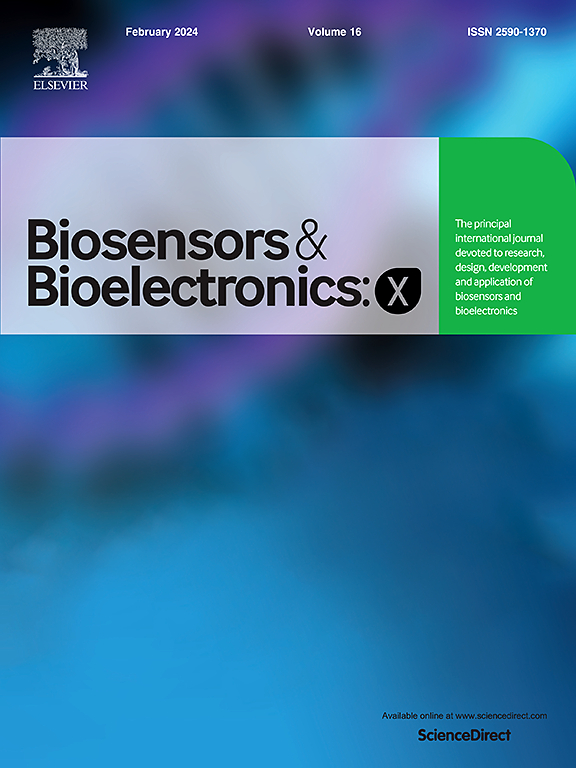人机交互触觉传感技术的最新进展:当前趋势和未来展望
IF 10.61
Q3 Biochemistry, Genetics and Molecular Biology
引用次数: 0
摘要
触觉传感技术取得了显著进步,显著扩展了其在机器人、医疗诊断和消费电子领域的应用。本文综述了触觉传感技术的最新进展,重点介绍了触觉传感技术在增强人机交互中的重要作用。它突出了机械感受器技术的进步,强调了材料科学和传感器设计的创新,提高了触觉传感器的功能和适应性。这篇综述批判性地研究了关键传感模式的演变——压阻式、电容式和压电式传感器,详细介绍了它们的工作原理、性能改进以及与机器人系统的集成,以实现直观和响应式的交互。探讨了传感器灵活性,灵敏度和能源效率的新兴趋势,解决了它们在以人为中心的机器人技术中创建自适应,可持续解决方案的重要性。此外,本文还讨论了可扩展性、耐用性和成本效益等挑战,这些挑战仍然是机器人和临床应用广泛采用的障碍。工作总结了未来的研究方向,主张将触觉传感器与人工智能相结合,开发能够进行复杂决策和无缝人机协作的自学习系统。这篇综述旨在弥合当前技术和未来可能性之间的差距,为人机交互的触觉传感变革创新指明道路。本文章由计算机程序翻译,如有差异,请以英文原文为准。
Recent advances in tactile sensing technologies for human-robot interaction: Current trends and future perspectives
Tactile sensing technology has witnessed remarkable advancements, significantly expanding its applications across robotics, medical diagnostics, and consumer electronics. This paper reviews the latest developments in tactile sensing technologies, with a particular focus on their critical role in enhancing human-robot interaction. It highlights advancements in mechanoreceptor technologies, emphasizing innovations in material science and sensor design that improve the functionality and adaptability of tactile sensors. The review critically examines the evolution of key sensing modalities—piezoresistive, capacitive, and piezoelectric sensors detailing their operational principles, performance improvements, and integration into robotics systems for intuitive and responsive interactions. Emerging trends in sensor flexibility, sensitivity, and energy efficiency are explored, addressing their importance for creating adaptive, sustainable solutions in human-centered robotics. Additionally, the paper discusses challenges such as scalability, durability, and cost-effectiveness, which remain barriers to widespread adoption in robotic and clinical applications. The work concludes with future research directions, advocating for the integration of tactile sensors with artificial intelligence to develop self-learning systems capable of sophisticated decision-making and seamless human-robot collaboration. This review aims to bridge the gap between current technologies and future possibilities, charting a path toward transformative innovations in tactile sensing for human-robot interaction.
求助全文
通过发布文献求助,成功后即可免费获取论文全文。
去求助
来源期刊

Biosensors and Bioelectronics: X
Biochemistry, Genetics and Molecular Biology-Biophysics
CiteScore
4.60
自引率
0.00%
发文量
166
审稿时长
54 days
期刊介绍:
Biosensors and Bioelectronics: X, an open-access companion journal of Biosensors and Bioelectronics, boasts a 2020 Impact Factor of 10.61 (Journal Citation Reports, Clarivate Analytics 2021). Offering authors the opportunity to share their innovative work freely and globally, Biosensors and Bioelectronics: X aims to be a timely and permanent source of information. The journal publishes original research papers, review articles, communications, editorial highlights, perspectives, opinions, and commentaries at the intersection of technological advancements and high-impact applications. Manuscripts submitted to Biosensors and Bioelectronics: X are assessed based on originality and innovation in technology development or applications, aligning with the journal's goal to cater to a broad audience interested in this dynamic field.
 求助内容:
求助内容: 应助结果提醒方式:
应助结果提醒方式:


